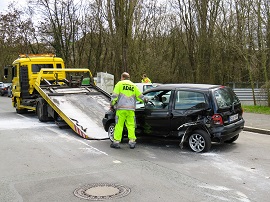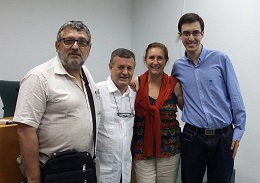
Prevention is the main instrument to reduce the accident figures during working days. To get it, establishing a Mobility Plan that meets the requirements the regulations state is essential.
8 september 2016
The numbers of traffic accidents are still really high year after year. In 2014, 1,688 people died and 9,574 were hurt. In total, 91,570 accidents were registered, only 512 less than the previous year.
Most of these accidents were produced when the workers were going to work or coming back from work. In these cases they are considered accidents at work and they are named in itinere accidents, such as the article 156 of the General Social Security Law. Likewise, in the statistics are also included those produced during journeys within the work day (in mission accidents).
La prevención es el principal método para contrarrestar esta siniestralidad. Una amplia base legislativa a nivel europeo y estatal, así como numerosas normativas autonómicas constituyen el punto de partida para establecer las medidas de prevención necesarias. Una de las recomendaciones para las empresas es la elaboración de un Plan de Movilidad que cumpla con los requisitos marcados en la legislación. Con estos planes “se pretende concienciar a los trabajadores sobre la importancia de la seguridad vial y así, mejorar la movilidad mediante un cambio más eficiente y racional en el uso del medio de transporte”. Así lo indica Raquel Navarro Aparicio, técnico superior en Prevención de Riesgos y exalumna del Máster en Prevención de Riesgos Laborales de la Universitat de València.
Prevention is the main method to counter this accident rate. Wide legislative grounds at a European and Estate level, as well as many autonomous regulations constitute the starting point to establish the needed prevention measures. One of the recommendations for the firms is elaborating a Mobility Plan that meets the requirements marked in legislation. These plans “aim to make workers aware on the importance of road safety and, thus, improving mobility through a more efficient and rational change in the use of means of transport.” This is how Raquel Navarro Aparicio, senior technician in Risk Prevention and former student of the Master’s Degree in Occupational Health and Safety of the Universitat de València, sees it.
In an article* published in the scientific journal Gestión Práctica de Riesgos Laborales on traffic accidents during the work day, Navarro describes the minimum contents these plans should include, as well as the benefits of their application.
Guidelines to carry out the plan
- Data collection: data collection on journeys, work accidents caused because of mobility, transportation models that workers use
- Identifying risks and evaluating them: Based on the collected information, evaluation of the human factor, vehicle and infrastructure.
- Action plan: Taking actions, deadlines, costs, responsible people and definition of the communication channels.
- Establishing a control and following of the plan to guarantee its effectiveness and good functioning.
Benefits
- Improving absenteeism by reducing accident leaves and, thus, improving workers health.
- Consolidation of the business commitment with workers safety.
- Improving work access of workers by fostering labour satisfaction and promoting their health.
- A good management and application of the plan can also have a positive impact on the environment.
*Article “El Plan de Movilidad, un instrumento jurídico de prevención de los trabajadores” published in the nº139 of the scientific journal Gestión Práctica de Riesgos Laborales by Raquel Navarro Ruiz, senior technician in Occupational Risk Prevention from the Universitat de València and expert in PRL (OHSAS) System Management.










